Future Farming Podcast – Janet Hughes and The Team
Introduction
From the series of Future Farming podcasts, in this one Janet Hughes has chosen to talk to Gabe Brown.
A familiar name with our readers (his name featuring in about half our issues of Direct Driller), Gabe has been named one of the twenty-five most influential agricultural leaders in the United States. He farms at Brown’s Ranch, a diversified 5,000 acre farm and ranch in North Dakota, with his wife Shelly and son Paul. He is one of the pioneers of the soil health movement. His book, “Dirt to Soil, One Family’s Journey Into Regenerative Agriculture.” Was featured in our recommended reading and has been quoted by many farmers on here, including Tom Sewell and Tom Chapman. If you haven’t read the book, it well worth a few hours of your time to understand how Gabe and Paul run their operation and how they have got to where they are today.
Gabe is also a partner in the regenerative farming consultancy Understanding Ag and an instructor for the Soil Health Academy, which teaches the power and importance of healthy functioning ecosystems. In this Podcast, Janet and Gabe talk about education in farming, shortening the supply chain and the six principles of soil health. Those who have read “Dirt to Soil” will realise he has added another one to the 5 mentioned in the book.
Janet Hughes: Hello everyone and welcome to episode three of the Future Farming podcast, which is the podcast of the Future Farming programme here in Defra, where we share the fascinating conversations that we have as part of the programme with everyone who’s interested in what we’re doing. And today I have the great pleasure of welcoming to the podcast Gabe Brown, author of Dirt to Soil, North Dakota farmer and leading regenerative agriculture practitioner, who’s going to share with us today some of his insights about the journey he’s been on and the lessons he’s learned, and what we can learn more broadly from what he’s doing.

Gabe Brown: I’m so excited about the direction that your country is heading with farm subsidies. I gotta tell you, I’m a bit jealous. Oh yeah, I’m a bit jealous because, well, just yesterday I was on, I was on a TV show talking about this and how we pay farmers based on yield and pounds, and nothing based on ecosystem services and nutrientdense food, and it’s just, the current model we have drives over-production and, you know, increased supplies, and you’re just stuck in this vortex of low farm profitability and so then subsidies increase, and that’s just bad for everyone.
Janet: That’s definitely the conclusion we’ve reached here, but the problem is because we’ve had subsidies for such a long time, moving away from them is a really complicated and difficult thing for farmers and for everybody, really, because it’s embedded.
Gabe: We need to do what they, yeah, we need to do what they did in New Zealand, just just drop it.
Janet: Do you think so?
Gabe: Ah, in all honesty, that would drive the biggest change on the landscape, okay? Farmers, ranchers are extremely resilient and they will adopt quickly if forced into doing it and, you read my book, you know how I was forced, and I tell people, best thing that could ever happen to me and now, you know, I have not accepted a penny of government subsidies for years. My business partners, they do not accept any government subsidies because our goal is to show people that a farm, a ranch can be profitable without it, and we’re all extremely profitable.
Now I’m not saying that it would not be nice to be paid for ecosystem services that we provide, you know, um, whether it be carbon, although I think, we really need to look at water, and biodiversity, and soil health, things like that first. Carbon is a part of it, um, the carbon flow, but you know, as you know, it’s extremely difficult to measure carbon accurately.
Janet: What do you think government should be doing, if not paying the subsidies, what should, what’s the ideal situation, do you think?
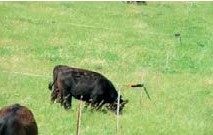
Gabe: I think there’s a place for, and I was asked this question yesterday, I said I think there’s a place for bridging the J curve, so to speak, as farmers, ranchers adopt these regenerative practices and realise that, you know, so many people think that, well, if I move to regenerative farming or ranching, which is what we typically call it, you know, there, it’s going to be a big cost incurred and I’m going to lose money. That’s not true at all. So our business, UnderstandingAg, our consulting business, we’re consulting on over 22 million acres across North America right now, and we increase profitability for most of our clients within the first two years. Increased profitability, and the way we do that is through proper soil testing, proper use of inputs. Okay, the vast majority of farmers and ranchers are grossly over fertilising, over, you know, heavy use of chemicals, insecticides etc. Those are not necessary, and we walk farmers and ranchers down that path, okay, we do the correct soil testing, find out biologically what’s in your soil, and then we’re able to start cutting them back on inputs.
So what’s mostly needed by the government, in my opinion, is education. Government needs to educate. You don’t know what you don’t know, you know. I had no idea about the six principles of soil health when I moved, started moving down this path 25-plus years ago. I had to learn things the hard way. Well, think of if you’re a farmer or a rancher, where are you getting your information? Well, you’re getting some of it from colleges, you’re getting it from government agencies, but you’re getting a lot of it from your suppliers, whether it be fertiliser, chemical, you know, seed feed, whatever the case may be, they’re telling you, but do they really understand how ecosystems function? Do they understand the importance of carbon, the importance of biology in the soil? How farmers and ranchers through their management can affect the small water cycle? How they can make their farms, ranches much more resilient to drought, to the fluctuations in temperature and moisture? And, you know, there’s no, you can’t expect a farmer or rancher just to suddenly know all this. So the government needs to play a significant role in education.
Janet: Do you think that’s the biggest barrier to farmers adopting these practices? Is it that they just don’t know?
Gabe: Okay, that’s an excellent question, and I think the barrier is, number one, it’s fear, fear of the unknown. Realise, since World War II, we have been stuck in this production model, where it’s all about inputs and then all about yield and pounds, okay? So farmers aren’t gonna, they don’t feel comfortable stepping outside the box. Now, I cannot speak for the UK, but here in the United States, 90 plus per cent of farmers and ranchers have to borrow money every year in order to put the crop in the ground and stay in business. Well, the lending institutions are not going to borrow farmers and ranchers that money unless they take part in the current farm programme and follow those protocols so they can be paid these subsidies, okay? Well, those, the current farm programme, at least here in the States, is almost totally antagonistic to regenerative agriculture, because it dictates planting monocultures, it dictates, quote unquote, ‘best management practices’, which are almost a total joke, they are totally antagonistic to biodiversity and to a healthy ecosystem.
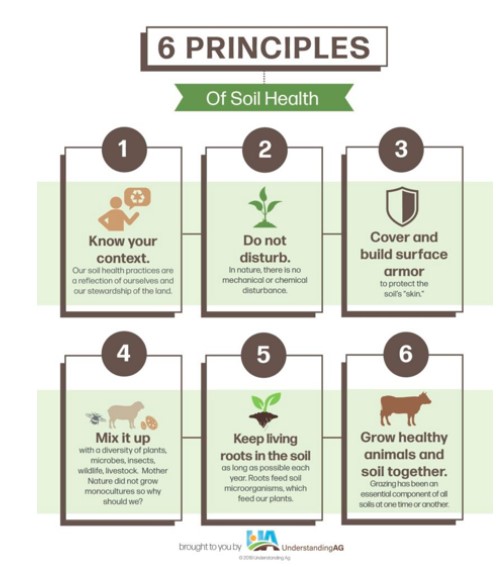
Janet: So, when you’re talking to farmers, and all these farmers that you’re consulting with, what’s the most persuasive argument that you’ve found really makes an impact when you’re trying to get them to pay attention to these ways of operating?
Gabe: Our consultants, we train them that you work within that farmer’s and rancher’s context, so it’s gonna vary a little bit according to each individual operation, but the number one approach we use by far is profitability, and we have the documentation to show that regenerative farms and ranches are much much more profitable, and they’re much lower stress and, let’s be honest, there’s a tremendous amount of stress right now on farmers and ranchers, most of them are strapped financially and, you know, pressures mount, and it’s not a good thing. So, the best way to combat stress is to be profitable.
Janet: Why is it more profitable? What is it that makes it more profitable?
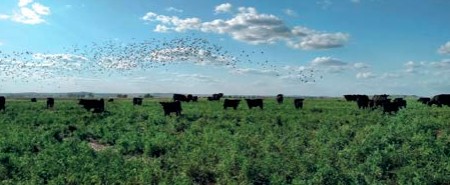
Gabe: Uhm, a number of things. So I will use my own ranch as an example. When we bought this ranch in 1991, organic matter levels were from 1.7 to 1.9 per cent. Now, scientists tell me historically speaking where I’m at in the northern Great Plains, here, organic matter level should have been in the 7 to 8 per cent range, okay. So in other words, 75 per cent of the carbon that was once in the soil is now in the atmosphere due to previous management. Okay, well, farmers need to understand that it’s carbon that drives the system and their farm profitability is based upon that carbon flow, how much energy can they take out of the atmosphere and move into the soil to feed biology.
So today, after adopting these six principles and being at it a while, our organic matter levels are now from 5.3 to 7.9 per cent. Okay, I’m still degraded and I tell people this, you know, I’ve travelled extensively, I’m on hundreds of farms and ranches every year, I have never ever been on a single one, including my own, that’s not degraded. We’re all farming and ranching degraded resources, that’s why we cannot talk about being sustainable. That is a joke. Why do we want to sustain a degraded resource? We need to be regenerative and so, getting back to your original question, as my soil health improved, the biology improved. Think of what happened. I went from being able to infiltrate a half of an inch of rainfall per hour. Today, documented through scientific tests, we can infiltrate over 30 inches per hour. Now, where I’m at, North Dakota, we have never ever received 30 inches of rain in a year. Yeah, okay, so that means that every raindrop that falls on my ranch is going to infiltrate, and then due to the carbon levels in the soil, it’s going to be held there for when plants need it, okay, so that makes me very resilient to drought, that increases profitability, then carbon feeds biology. As I increase carbon levels in my soil, the biology increases and cycles the nutrients.
Now, here’s a little-known fact that a lot of people today, agronomists, would argue with, but we’ve done this, our firm Understanding Ag has done total nutrient extraction tests on hundreds of farms, and what we’ve found, we have yet to find a single farmer ranch that does not have adequate nutrients already in the soil, okay, so nitrogen, phosphorus, potassium, and not just by a little, there’s thousands of pounds of this in the soil. So you might ask, well then, why do farmers and ranchers need to fertilise? Well, the answer is, they don’t have the biology in the soil to cycle those nutrients, so as we adopt these principles, get more biology, more nutrients become available, that allows us to systematically, methodically cut back on the amount of inputs, that increases profitability and then, because you have better soil aggregation, better biology, more water, and water is critical, and I know in the UK often people have issues with too much water, but realise it’s not so much too much water as it is a lack of soil aggregation and a lack of the ability of that water to move throughout the soil profile. You know, biology in the soil lives in and on thin films of water, it’s a sub-aquatic ecosystem, so water in the soil is a good thing. But you can’t have it waterlogged or it becomes anaerobic. So what we find, as we adopt these principles and advance our soil health, we’re able to increase production too, also, so the increase in profitability comes about from a lowering of inputs and an increase in production.
Janet: And you’ve also done, haven’t you, shortened the supply chain so you get more of your income at the farm gate alongside these farming practices? Can you say a bit more about what you’ve done there?
Gabe: Yeah, so on our own ranch, we grow a wide variety of different cash crops, corn and wheat and barley and oats and rye and vetch and peas, and many others, but we also, we raise grass-finished beef, grass-finished lamb, pastured pork, we do eggs, we have laying hens, we do broilers, we do some turkeys, we do a little bit of vegetable production, and we do honey, and then we market all those products direct to consumers from our ranch and we’re able to ship anywhere in the lower 48 contiguous United States and it more or less eliminates, so to speak, the middleman and goes direct to consumers. We add about 35 per cent net profit margin on top of what we make, you know, on the production side of it. So essentially what we’re doing, we’re keeping over 70 per cent in our pockets versus, you know, the average, and it’ll vary, from 8 to 11 per cent of farm sales, you know, actually go to the farmer. Well, we’re over 70 per cent.
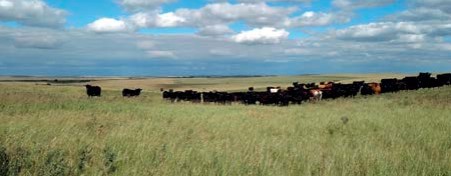
Janet: You must come across lots of farmers that say, well, that’s all right for you, on your particular land, in your particular circumstances with your particular soil, but it won’t work for me because I’m in a different country, a different climate, a different soil type, different type of farm. How widely applicable are the methods you use? And we should probably, for those who haven’t actually had the joy of reading your book, we should probably say what these principles are as well actually. Let’s run through them quickly, and then say something about how widely applicable they are too.
Gabe: Okay, the six principles very quickly are, number one: context, and that was added since I wrote the book. We came to the realisation that, you know, nature always operates in context. You know, I tell people, there’s a reason bananas don’t grow in North Dakota, you know, we get winter up here, so we see way too many farmers or ranchers trying to operate out of their context, okay. You have to grow the species that survive in your area and thrive in your area in the climate and environment you’re in, okay. Principle number two is: least amount of mechanical chemical disturbance possible. Nature does not till the soil as copiously as we do. Yes, there’s earthworms and burrowing animals that till the soil, but we’re not turning the soil over with a plow, you know, nature just doesn’t operate that way. Nature, yes, plants emit chemicals, animals emit chemicals, but not the copious amounts of insecticides, pesticides, herbicides and fungicides we’re using in agriculture today. Those are all only needed because of our management, or lack thereof.
The next principle is armour on the soil. You should never ever see bare soil. Walk into a forest, walk into a native prairie ecosystem, it’s always covered, not only with living plants, but there’s that residue layer that protects the soil from wind erosion, water erosion, evaporation. The next principle is diversity. Where in nature do you find a monoculture? The answer is, you’re not going to find one unless mankind has, through mismanagement, dictated that, you know. But what do we do in agriculture, we plant monoculture fields, right, it’s just totally antagonistic to how a healthy ecosystem functions.
The fifth principle is: living root in the soil as long as possible throughout the year. Nature always tries to put living roots in the soil, so it can take that energy, that sunlight, and then through photosynthesis, convert it to all these carbon compounds that the plant uses – part of that for growth, the rest is pumped into the soil to feed biology. We need more of that. Look, what we’re doing in agriculture, we grow a cash crop and then the fields sit idle for long periods of time, that’s just not how nature functions.
And the final principle, and one of the most important, is animal and insect integration. Nature and ecosystems, natural ecosystems, do not function properly without animals and insects. You know, there are studies, that study came out a couple years ago, Germany lost 75 per cent of its biodiversity in a 25 year period, and we’re seeing that worldwide. If we don’t have insects, we’re not gonna have a healthy ecosystem. If we don’t have grazing animals out on the landscape, they play an important role because once a plant is grazed it sloughs where it exudates so it regrows, that cycles more carbon, and then that animal, the microbiome in the gut of that animal is closely related to the to the microbiome in the soil and it’s a transfer of biology and nutrients. You know, those animals, as they defecate and urinate, are putting nutrients back onto the landscape.
So, what we tell our clients is, your ability to be successful with regenerative agriculture is directly proportional to your understanding of, and adoption of these principles. Too many people adopt one or two principles and then they get frustrated, well, it doesn’t work for me. Well, no, it would work for you, if you understood them and applied them. And here’s the challenge I put forth to anybody: I will bet my ranch here in North Dakota against your farm or ranch anywhere in the world where there’s land-based production agriculture, that I can get these principles to work on your ranch. I’ve made that bet, I’ve stood in front of audiences in Australia and all over North America and made that statement, South Africa, and I have yet to have anybody take me up on it but I’d be happy for them to do so because I’m going to own their farmland. Well, these principles, if you look, think about these six principles, walk out on any farm or ranch, they’re applicable. Now, you’re going to use different crop species, you’re going to use different cover crop species, you may use different livestock species, but the principles are the same, and that’s how I’m 100 per cent confident that they’ll work.
And the other thing is, we’ve seen it over and over. I can, you know, pick up the phone and call into any country around the world and talk to people who are practicing regenerative agriculture.

Janet: Yeah, I’ve visited some, actually, here in the UK, and what you say, certainly on the farms I’ve visited, rings true. If there are farmers listening now and thinking, well, okay, I want to do this but, as you say, I’m fearful, there’s a risk to me of change, but I want to, I want to make a start, where should a farmer start if they want to begin adopting these principles? What’s the most important thing to do first?
Gabe: Yes, great question, and the most important thing by far is education. You need to educate yourself, and there’s a lot of good resources out there, our firm UnderstandingAg and then our educational arm Soil Health Academy, we have a wealth of resources on our websites, and then I would say, do your homework and find out who in your area is doing this, and go talk to them and attend, you know, workshops or field days where these are discussed. You know, there are a number of people who are doing an excellent job in the UK and in Ireland adopting these principles and farming and ranching regeneratively.
Janet: Can we talk a bit more about practically what it looks like on your farm? So, if I were to visit your farm, if we were watching you on a screen now, if we actually look at your farm, what’s different about it compared to when you started?
Gabe: Yeah, a lot of people drive by my ranch and they don’t give it a second thought, except at certain times of the year, because I have cash crops growing just like my neighbours do, there’s livestock out grazing in the paddocks just like my neighbours. But when we harvest that crop, they will notice, gee, Gabe’s fields are still green, there’s growing plants there, gee, now he’s got the livestock out grazing those plants during the winter. Well, you know, our livestock are not in confinement, they’re out on the landscape all year, even during winter, and we get a lot of snow, you know, we’ll get six plus feet of snow during the winter, and obviously it melts down and, but the livestock are not confined, they’re out, and the difference is, I have living diverse plant communities on my fields, in my pastures, as long as possible throughout the year, and that’s cycling that carbon, it’s out of the atmosphere into the soil.
The other thing, if they stop and talk to me, I’m always happy to take them over to the neighbours’ fields, put a spade in the ground and look at the soil there, and then just cross the fence line into mine and look at the soil, same soil type, totally different, totally different, and I tell people, because I often hear that, oh, you don’t understand that my soil is too high in clay, my soil is this or that, and I ask them, but do you understand you can change that? Now, no, you can’t change the inherent properties, it’s either going to be sand, silt or clay, or some combination thereof, but just because you have clay soils, doesn’t mean it can’t be well aggregated, it doesn’t mean that, you know, it can’t be full of life and functioning properly, and that’s a direct reflection of them. So I tell people, I’m not going to feel sorry for anyone who says, oh, my soils aren’t like that. No, you just don’t understand, you know, you need to educate yourself, and if you do, you can make significant changes, and I often get asked, well, how long does it take? So here’s what we do with our clients.

First of all, every new client of ours, has to educate themselves. We have an online course, RegenAg 101. They have to review and understand that, because we’re not going to send a consultant out and then it’ll be like talking a foreign language to this producer, they have to understand that, and then we tell them, you have to dedicate at least one field for five years, and for five years we’re going to walk you through and help you adopt those six principles on that field.
Normally what happens by the end of year two or by the end of year three at the latest, they’ve got all their entire farm enrolled and moved down the regenerative path, because you can see the differences in the soils, and you’ll start to see the difference in profitability certainly by the end of year two. Now, the only caveat to that, of course, is if there was a weather extreme like hail, drought, flooding, something like that, yeah.
Janet: So when we’re thinking about measuring, we’re thinking about a kind of England level, which is where I’m looking, if we want to measure the success of regenerative farming. We’ve talked about soil organic matter being one thing, we talked about profitability being another, are there other measures that we could use to say regenerative farming is really making a difference in being successful? How can we tell?
Gabe: One of the easiest ways is the aggregate stability test. You need to measure, see, a soil aggregate, you know, and all farmers, the soil aggregate is that little crumb, that chocolate cakelike structure in the soil, a soil aggregate will only last about four weeks and then new ones need to be rebuilt, and soil aggregates are sand, silt and clay particles held together with sticky substance put out by mycorrhizal fungi and biology. So we can measure soil aggregation and aggregate stability. How stable those aggregates are in water will directly tell us if you’re moving in a positive direction or not. We can also do what’s called a PLFA test, phospholipid fatty acid test, which tells us the amount of bacteria and protozoa and nematodes and fungi, and the balances thereof, because in a healthy ecosystem, you’re going to have a very good population of all of these. But your predator-prey relationship, in other words, the balance of bacteria to protozoa and nematodes, is going to be such that you have the prey that can eat the bacteria, and that’s what cycles your nutrients.
So, then the other things we, of course, measure are biodiversity: plant communities, insect communities, wildlife, birds etc. We do counts on them because wildlife, you know, whether we’re talking birds or insects, they’re going to show up where there is the home and habitat that they need, and it is amazing on these regenerative farms and ranches how quickly that happens. Then, the other thing, of course, we measure is farm profitability, because all of these ecosystem services have to take a back seat to the ability of a farmer or rancher to stay out there, make a living and support their family.
Janet: And often it’s presented as a choice between doing that and doing things which are good for the environment, but what I think is really interesting about your book and your approach is that you’re saying, no, it’s not a choice, you can do both.
Gabe: That’s exactly right. The beauty of this whole thing is that what’s good for farmers and ranchers pocketbooks is also good for society and good for the environment. You know, I testified just here, six weeks ago, in front of the U.S. House, and I went there to try and show them that agriculture is part of the solution, it’s not part of the problem. So often agriculture is vilified, oh, we’re releasing too much carbon in the atmosphere, we’re burning fossil fuels, and animals are are putting out methane and that’s destroying the environment, and I told them, look, in the current production model, yes, that’s the case, but in the regenerative model, that’s not the case, we’re actually a net carbon sink, animals out grazing on the landscape will sequester more carbon, we have proof of that, and not just a little bit, a lot, and we need more animals out on the landscape, not less, but they need to be properly managed. And so it benefits biodiversity, you know, our water is going to be cleaner because we lower the amount of synthetic nutrients that are applied, and we’re able to hold those nutrients on the landscape via living cover crops and living plants, so it cleans up the watershed, we’re, as I said, taking much more carbon out of the atmosphere. And then, a very very important one, perhaps one of the most important is, we now are doing nutrient testing of foods grown in in a regenerative model versus foods grown in the conventional model. The differences are absolutely mind-blowing.
We’re working with Dr. Stephan Van Vliet at Duke University Medical Center. Through the use of a mass spectrometer, he can measure over 2,500 different phytonutrient compounds. He is finding significant differences, you know, in the food grown, in regenerative versus the food grown conventionally. When you look at the human health crisis going on in this world today, you know, the increase in ADD, ADHD, Parkinson’s, Alzheimer’s, autoimmune diseases, cancers, the list goes on, most of those, 95 plus per cent of those can be mitigated with a healthy gut microbiome, and a healthy gut microbiome is directly related to the food that we eat. And so all of these things, and this is what we’re such proponents of, let’s come together and work together as a society on 80 per cent of the things we can agree on. The other 20 per cent will work themselves out, but we all can agree that more carbon in the soil is a good thing, we all can agree that clean water is a good thing, we all can agree that farm profitability and the revitalisation of our communities is a good thing, we all can agree that food higher nutrient density is a good thing. So why can’t we work together on this?
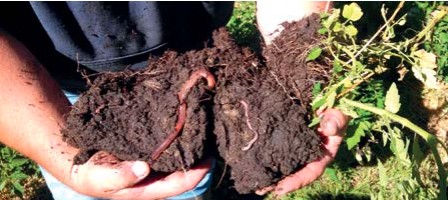
Janet: Build on the common ground.
Gabe: Exactly.
Janet: Lots of people look to you for inspiration and learning and advice. Who do you look to for inspiration?
Gabe: Well, the first is God obviously. You know, I tell people he put me through what he did those 25 years ago because he knew I had a big mouth and I’d spread the word! And so I look for inspiration in nature, you know, I tell people, and I wrote in my book that during those four years of hail and drought, I would walk through our native pastures and observe how ecosystems function, so that inspires me, but what really inspires me is the stories, when I see a farm family which was struggling, and now they’ve been able to pay off their debt and, you know, their family is happy, and the children are actively involved in the farm or ranch, that inspires me, and that’s the reason I do what I do.
Janet: Lots of farmers who start adopting these sorts of practices say that when they first start their neighbours laugh at them over the fence and think they’re completely wacky. Did that happen to you? And if so, how did you hold your nerve in those early years?
Gabe: Oh, very much so and realise that, I did not grow up on a farmer ranch, I grew up in town, so everybody expected me to fail. Well, that was out of the question. I was not going to fail, it’s not in me, you know. I tell people I fail at things every year, but they’re just learning experiences, but I wasn’t going to fail as a farmer rancher and, you know, back then none of the neighbours would offer to help me out or anything because they just wanted to buy my land. They thought I’d go broke, they’d be able to buy my land. Well, I really leaned on my family and my faith, and that’s what got me through this.
Now today, you know, back when I went through this, there was no internet, there wasn’t the communication we have today. I couldn’t have a Zoom meeting with a fellow regenerative agriculturalist in another state. Now today, it’s a real community, and one of the things we’re most proud of is that those of us involved in regenerative agriculture are willing to share with anybody. You know, so often in conventional agriculture, you want to keep what you’re doing a secret because you want to have a leg up on others. That’s not the way it is in regenerative agriculture, we understand that what’s good for us is good for our neighbours, good for our community, and let’s all work together and, you know, there’s plenty of people to sell food to, and that’s really what we’re doing is selling food and fiber and let’s work together for the common good.
Janet: And do you think there’s a mindset that you need to be a regenerative farmer. I’ve heard people talk about a shift in mindset.
Gabe: Yes, definitely, there is, and the hardest thing for us to do, when we educate as to regenerative agriculture and these principles, is realise we’re changing, if you’re a farmer and rancher who has been farming and ranching a while, you’ve got these biases and you’ve got these beliefs, these beliefs are based on, not only your own practices and what’s happening, your own experiences, but also the experiences of your fathers and grandfathers and neighbours. Well, what you’re doing in regenerative agriculture is totally different, okay. I just told you earlier in this, that there’s plenty of nutrients in the soil, well, that’s certainly not what you’ve heard, it’s not what you’ve observed, it’s not what your agronomists tell you, it’s not what your neighbours tell you. But I can prove that, through simple soil tests I can prove that. So that’s what we do, we have to go turn their world totally upside down, and then the next thing, we have to teach people the power of observation. Okay, most farmers walk out in the field, they see a weed, they want to spray that weed, well, I want to know what weed, more correctly forb, is that, and then what’s that forb trying to tell us. For instance, I use dandelions a lot, dandelions tell me that there’s a lack of calcium cycling in that soil, and you need plants that will cycle calcium. You need to observe, you know, much more than is done in conventional agriculture.
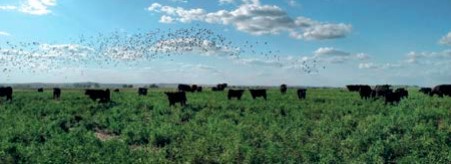
Janet: And you’ve also talked about, I just read Nicole Masters’ book, and she quotes you as saying that you plan to, you plan to fail at something every year. Is that part, is that part of the mindset as well?
Gabe: Uhm, yeah, you know, people ask me, well, who did you learn from? Well, I learned a lot through trial and error, and I tell people, you know, my son and I are experts at failure because we want to fail at several things every year. How do I know if a certain cover crop species will work on my land or not? How do I know if a crop combination will work or not? And the thing is, you just make, you try these things on a small scale. If they work, then you increase the acreage of those, if they don’t work, we try things twice, and if it fails twice in a row then, okay, we move on to something else. But I’ve tried hundreds of different cover crop species, you know, I’ve tried different scenarios as far as grazing my livestock, you know, do the sheep go ahead of the cattle? Do they go behind? Do they go with them? You know, where do I move the laying hens? You know, we’re always experimenting, but that’s what makes it fun. You know, I tell people, you know, I used to wake up every morning trying to decide what I was going to kill that day, was it going to be a weed, a pest, fungal disease? I was going to kill something. Now I wake up every day, how do I get more life on my ranch, and it’s much more enjoyable, and much more profitable working with life as compared to death.
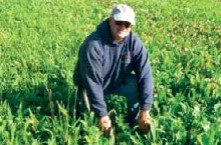
Janet: What’s next for you on your farm? What are your goals for the next 10 years, having achieved everything you’ve achieved so far?
Gabe: Yes, and on our own ranch, three years ago my wife and I turned the ranch over to our son and he’s 33 now, and he’s going to take this way beyond where I did. I don’t know exactly what he has planned, I just know, I have confidence and I’ll support him, and whatever he decides, my personal goal is just to do what I’m doing right here with you, spread the word of regenerative agriculture, and try and heal, not only our ecosystems, but heal society. Let’s come together for the good of it.
Janet: It’s really interesting hearing you talk about the social aspect of this, because some of the commentary on regenerative agriculture is critical, isn’t it, of not including that social aspect and not thinking about social justice, racial justice, where do you stand on that set of issues?
Gabe: Very good question, and the beauty of regenerative agriculture is, it knows none of those. You know, we work with anyone. I mean, we’re working with indigenous peoples, we’re working with people of colour, every faith, nationality,
creed. We’ll work with all of them because it knows no boundaries. And the other thing is, you know, with bringing profitability back into agriculture, think of, I don’t know how it is in the UK, but in the United States here, there’s large populations of immigrants that do the manual labour. Well, by improving the profitability in a farm or ranch, we can improve the wages paid, we can improve their living conditions, we can, you know, help them move forward as an individual and reach their potential and dreams, and that’s a good thing.

Janet: And I’ve got a question to finish with. Before I do, I should say thank you, because I, so the people have, Twitter, the farming community on Twitter, because I said I was going to be talking to you and asked people to suggest questions, so lots of the things I’ve been asking you have come from farmers in England who are keen to hear your answers to some of the things I’ve been asking, and the last one was from somebody who has wanted me to ask you, which aspects of your business bring you the most joy? Gabe: And I tell people, the thing I enjoy the most is, those who know me, I don’t sleep much, so I’m outside when the sun’s coming up, and I love, at that time, taking a walk across the native prairie with my dogs and then observing the livestock as they get up and start their day, and I listen to the birds and see the wildlife, and that really brings me joy.
Janet: I can imagine why, Gabe. It’s been absolutely brilliant to talk to you, thank you ever so much for your time and your insights. It’s been fantastic. I could happily ask you a hundred more questions but we’re out of time, so I just want to thank you very much for all that you’re doing and for coming on our podcast today.
Gabe: Well, thank you, it’s a pleasure being with you. Happy to visit with you anytime, Janet.
Janet: Thank you so much. Thank you for tuning in today to the Future Farming podcast. You can follow the podcast at all the normal places where you get your podcasts, and you can also follow us on our blog by following the QR Code. We’ll be recording the next episode soon and we’ll look forward to seeing you then. Bye!
